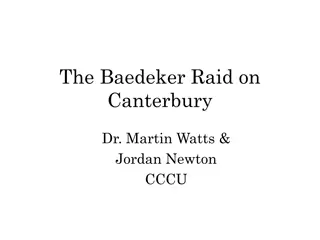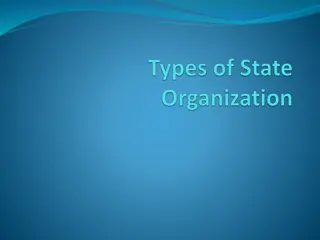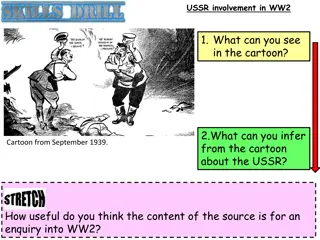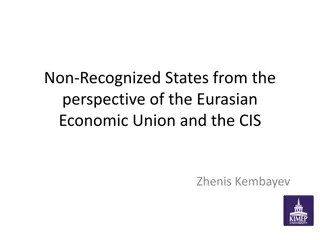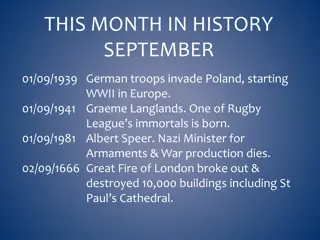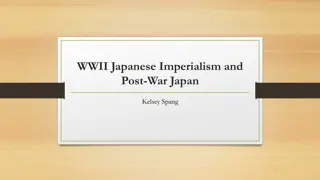
Key Events of World War II and Post-War Developments
During World War II, Turkey remained neutral, Iran was divided between Russian and British troops, and Arab states struggled against Axis forces in North Africa. Post-war, significant events included the rise of Nasser through a coup in Egypt, the birth of Israel amidst conflict with Arab neighbors, and movements for independence in regions like North Africa and Algeria.
Download Presentation

Please find below an Image/Link to download the presentation.
The content on the website is provided AS IS for your information and personal use only. It may not be sold, licensed, or shared on other websites without obtaining consent from the author. If you encounter any issues during the download, it is possible that the publisher has removed the file from their server.
You are allowed to download the files provided on this website for personal or commercial use, subject to the condition that they are used lawfully. All files are the property of their respective owners.
The content on the website is provided AS IS for your information and personal use only. It may not be sold, licensed, or shared on other websites without obtaining consent from the author.
E N D
Presentation Transcript
World War II Turkey Neutral until the very end of the war Iran Divided between Russian and British troops Arab states Axis marched through North Africa to try to cut off British supplies and entered Egypt; were forced back and ultimately defeated in Tunisia Britain made Egypt a focal point for stationing troops in the Mediterranean Anglo-Iraq war of 1941, in which Iraq tried to assert full sovereignty during the war and forced Britain to occupy the country for the rest of the war Syria and Lebanon taken over by the Germany-allied Vichy French regime North Africa Massive numbers of North Africans were recruited into the war to fight for the French Led to high expectations for independence or new rights after the war 1945 Setif revolt turned into a massacre of civilians by the French; political repression and huge development discrepancies between the pieds noirs and native Algerians By 1954, the Front for National Liberation (FLN) was created as an Algerian independence movement Britain took over Italy-controlled Libya in 1943 0
Palestine and the Birth of Israel Palestine Jews sided with Britain during the war, but prepared to fight them and launched attacks against British interests By 1947 Britain just wanted out and turned Palestine over to the United Nations The UN recommended that Palestine become independent as two states Britain pulled out of Palestine rapidly in 1948, leaving a power vacuum; Jewish forces attacked Arabs within the borders of the proposed Jewish state The next day, Egypt, Syria, Lebanon, Transjordan, and Iraq invaded Israel, starting a war that lasted 6 months; the attack was poorly coordinated and the Arab armies were smaller than the Jewish defense force; considered a disaster (nakhba) in Arab states As a ceasefire was concluded, Israel had expanded its borders and there were 700,000 Palestinian refugees outside of Israel 1
Rise of Nasser The Coup of 1952 Increasing social unrest in the early 50s, with militant activities by the Muslim Brotherhood, and open conflict between the British and Egyptians A coup was led by a group of young military officers (Free Officers), with a senior officer as the official head of the group (Mohammed Naguib) Overthrew King Faruq, and targeted severe economic inequalities An attempt to avenge the disaster of 1948 Arab Socialism Led by Nasser and the Revolutionary Command Council Initiated land reform as its first big project, then industrial and educational reform Extensive nationalization of industries, commercial enterprises, and media New constitution with a new national assembly, guided by a very powerful Nasser, elected only in a plebiscite Egypt became increasingly a police state 4
Suez Crisis and Arab Military Coups The Suez Crisis of 1956 Nasser negotiated a British withdrawal by 1956, as well as the independence of Sudan Nationalized the Suez canal in an attempt to defy the West and to generate income for his development projects Britain, France, and Israel invaded, but the UN (backed by the US and Soviets) firmly intervened, forcing a ceasefire Nasser emerged a hero, and grateful especially to the Soviet Union for its support Implicated Western Europe as military allies of a hostile Israel Other Arab Military Coups Syria: Military coups started in Syria in 1949 and continued until 1954 In the 1954 elections, two forces emerged: a nationalist/socialist Ba ath (Resurrection) Party, and the Communists Iraq: Under King Faisal and his son until 1958; pro-Western orientation Military coup in 1958 by Abd al-Karim Qasim killed off the royal family; subsequent military regimes until 1968 tried unsuccessful revolutionary land reform Military was challenged by two political forces, Communists and Ba athists Coup led in part by Saddam Hussein and other Ba athists took power in 1968 5
Arab Nationalism and the Cold War Arab Nationalism and the United Arab Republic Nasser dreamed of uniting Arabs under a common nationalism and government A continuation of a nationalist trend going on since the fall of the Ottoman Empire United Arab Republic created with Syria in 1958 By 1963, Alawite military officers, including Hafez al-Asad staged a coup in Syria The Impact of the Cold War Nasser turned away from the British and sought Soviet arms and help in constructing the Aswan High Dam In 1958 the USSR agreed to finance the Aswan Dam project and provide ongoing military assistance Eisenhower Doctrine (1957) tried to create regional allies for the US by promises of economic and military aid Strong US support for Israel, Turkey, Iran, and Morocco 6
War and independence in North Africa The Algerian War of Independence (1954-1962) France lost a long war to keep Vietnam by 1954 National Liberation Front (FLN) was formed to press for armed revolt in 1954 By 1962, the French settlers decided it was a losing battle, and moved en masse back Staggering losses: somewhere between 300k and 1m war dead Suffered an early military coup, then led by Boumedienne as a military socialist state Qaddafi s revolution in Libya Libya became independent under King Idris in 1953; recovering from the Italian occupation in which up to 1/3 of the population of Libya had died Qaddafi led a coup and tried initially to follow Nasser s Free Officer script; got the British and Americans to withdraw their military bases, nationalized the oil company Independence in Tunisia and Morocco Active revolutionary movement in Tunisia led by labor unions and a political party called the Neo-Destour (New Constitution) led by Habib Bourguiba Because it was not their highest priority, the French offered Tunisia autonomy and Bourguiba turned this into independence by 1956 He led a socialist, modernizing, secularizing campaign in Tunisia had himself declared President for Life The Moroccan Sultan, Mohammed V, was a key force for independence, in conjunction with the Moroccan independence party (Istiqlal) Hassan II took over after Mohammed V s death in 1961 7
Israel and the Palestinians Growth of the Israeli state Dominated by the figure of David Ben Gurion, the first Prime Minister, until about 1963 Established a parliamentary democracy, with a unicameral legislature (Knesset); became a very fragmented party system Law of Return: Huge amounts of immigration post-WWII Big debates over the role of religion in the Jewish state Increasing orthodox control over the religious apparatus and functions of the state Siege mentality of security, required military service The issue of Palestinian refugees A million Palestinian refugees registered with the UN in refugee camps in Jordan, Lebanon, Syria, Gaza The Birth of the PLO Formed by the Arab League in 1964 in Cairo to deal with the Palestinian situation Active Palestinian guerrilla activity based out of Jordan after the 1967 war Umbrella organization for militias like al-Fatah, led by Yasir Arafat; Arafat became chairman of the PLO in 1969 focused on Palestinian nationalism w/armed resistance Clashes between Palestinian guerrillas and the Jordanian military in 1970 PLO moved its base from Jordan to Lebanon and increasingly became involved in international terrorist activities Also tried diplomatic activities, like coming before the UN (1974) 8
Israeli-Arab Wars and the rise of the Likud June War of 1967 A result of a long-standing tense situation of threat and counter-threats Arab states formed a mutual defense pact with Egypt (Syria, Iraq, Jordan) Israel struck first, destroying the Egyptian air force on the ground The war lasted all of six days and redrew the map of Israeli control About 400,000 new Palestinian refugees were created Israel now administered territory over 1.5 million new Palestinians Huge psychological shock for the Arab world; inflation of Israeli confidence UN resolution (242) called for the Israeli withdrawal from conquered territory was not implemented objections to recognizing Israel and differing interpretations War of 1973 In October 1973, Egypt and Syria launched coordinated attacks on Israeli positions, moving into the Golan Heights and the Sinai peninsula with much success The Sinai peninsula was returned to Egypt in 1979 The rise of Likud in 1977 Success of the Likud coalition led by Menachem Begin over the long dominant Labour coalition Revolt of the Sephardim; Expansionist idea of Israel important role of expanded Jewish settlements in Gaza and especially the West Bank 10
Independence in Yemen and Persian Gulf States Civil war and division in Yemen In 1962, the military ousted the imam of Yemen and declared a republic Turned into a civil war fought between the Imam and Republican rebels In 1967 Britain withdrew from Aden and was replaced by a Marxist government in South Yemen The Yemens thought about uniting in 1979, but waited until 1990 Independence in the Gulf and merger of the Emirates Most of the Gulf states gained independence in 1971 Kuwait became independent in 1961 and created a national assembly under the ruling family Family coup in Oman Oman under Sultan Sa id was very removed from the world Sai d overthrown by his son Qabus in 1970 and ultimately stopped the rebellion and expanded modern services, schools, etc. 11
Key lecture termsSeptember 22 Jamahiriyya Confessional system (Lebanon) Habib Bourguiba Setif Massacre (1945) Mohammed V War of 1948 Hassan II Gamal Abd al-Nasser Green March Suez Crisis War of 1967 Ba ath Party Law of Return United Arab Republic Sephardic vs. Ashkenazi Jewry Hafez al-Assad Palestinian Liberation Organization (PLO) Saddam Hussein Black September (1970) National Liberation Front (FLN) Yasir Arafat Muammar Qaddafi 12
Key lecture termsSeptember 28 Sultan Qabus War of 1973 Democratic Party (Turkey) Anwar Sadat Mohammed Mossadeq King Hussein White Revolution Menachem Begin Ayatollah Khomeini 13

